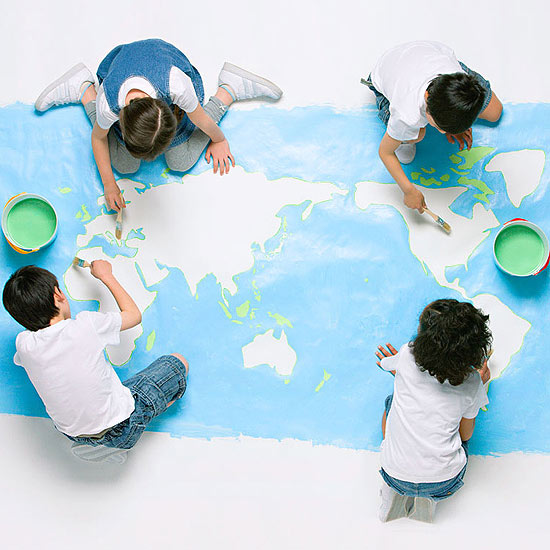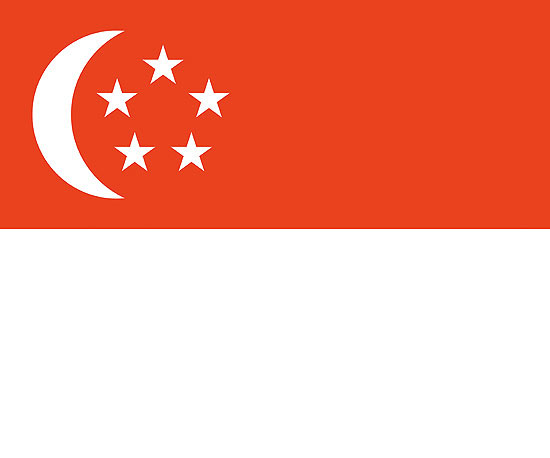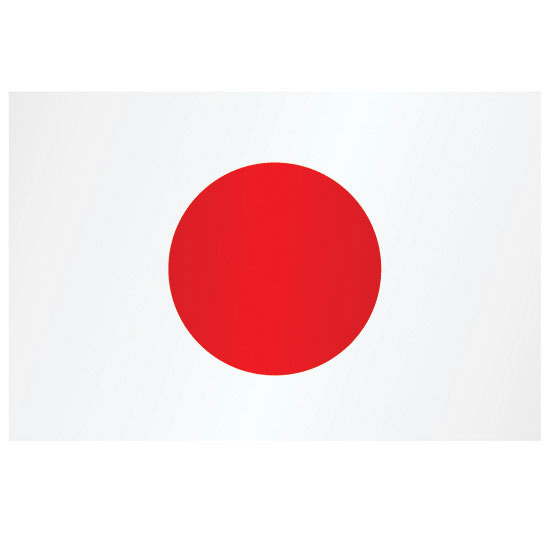
Finland: Freedom to Learn
It doesn't seem like a formula for success: Finnish kids start school later (at age 7) than kids in most countries and have far less homework than students in Asia and the U.S. Yet they rank near the top in reading, math, and science. How do the Finns do it?
"Teachers there have a very low-pressure, flexible approach," says filmmaker Bob Compton, whose documentary series on global education includesThe Finland Phenomenon: Inside the World's Most Surprising School System. "In Finnish classrooms, you see a lot of hands-on activities — painting, drawing, working with clay, playing music. The classes are small, and each one has two teachers." Children call instructors by their first name and often "track" with them for up to three years.

But there's rigor behind this seemingly laid-back atmosphere. Although kids under 7 may not enroll in formal classes, Montessori-style play schools and child-care centers (generally offered for free to parents) engage kids in creative play and help them acquire essential social skills. Finnish teachers possess degrees in the subjects they teach. New grads spend a full year doing hands-on training under the tutelage of a master instructor. This helps teachers assess students' skills and needs via observation, rather than merely by testing them. Whatever the topic of study — reading, writing, math — the emphasis is on teaching kids how to learn.
"The point isn't how many math problems they do but whether students have a conceptual understanding of the addition or subtraction they're doing," says Tony Wagner, Innovative Education Fellow at Harvard University and author of Creating Innovators: The Making of Young People Who Will Change the World.

Singapore: Top-Tier Teachers
Teaching is a high-status profession in this small island nation. Recruits tend to graduate in the top third of their class, and they complete a special training program. By the time they're done, instructors have a deep-seated understanding of how kids learn, grow, and develop.
Singapore, which ranks in the world's top five in math, science, and reading, focuses on school readiness for its preschoolers, says Elanna Yalow, Ph.D., chief executive officer of Knowledge Universe Early Learning Programs, which operates preschools and child-care centers in countries including Singapore and the U.S. Rigorous testing and tracking are the norm by grade school. Singapore's business language is English, but most kids speak Mandarin, Malay, or Tamil as a second language at home or at school, and some learn a third or even a fourth language at certain schools, says Dr. Yalow. Still, the country's educational system isn't just about rote learning and memorization. "Ethics and citizenship are mandatory subjects in school," says Charles Fadel, coauthor of 21st Century Skills: Learning for Life in Our Times.

China: Logging Long Hours
In the U.S., the average length of the school day is about six and a half hours. By contrast, even preschoolers in China put in eight-hour days, and by age 6, children have several hours of homework. "Parents here do everything they can to ensure that their one child succeeds and gets into a top college in this very competitive society," says Stephanie Giambruno, an American TV producer and mom of a 4-year-old, who's lived in Beijing for the past four years. "You don't see Chinese primary-school kids playing outside, because they're home doing schoolwork. Even on Saturdays, they're taking English or getting ahead in other subjects."
All this diligence has a big academic payoff. Chinese students ages 6 and older memorize complex Mandarin characters (as many as 50 new ones per week), master a second language (most commonly English), and delve far deeper into the study of science, taking three to four years each of biology, chemistry, and physics in high school compared with the typical one year each for most American students.

New Zealand: Sharing Their Stories
You probably worry about how old your child should be when he starts using the Internet, but not so in New Zealand — where kids are encouraged to post their work online from a young age. "Students start using technology when they're 5, drawing with simple graphics programs and dictating the captions to their teachers," says Sarah McPherson, Ed. D., chair of the department of instructional technology at the New York Institute of Technology, in Old Westbury, New York, who took a recent tour of New Zealand schools. "By the time kids are in third grade, they're posting their writing and drawings online independently."
It's all part of the Ministry of Education's goal to create a generation of kids who express themselves and who take responsibility for their own learning. "Blogging is a way of giving the students a voice," notes Dr. McPherson.

India: Academic All-Stars
Can you picture your child joining a team that competes not in soccer or tennis but in charades? She could, if she lived in India. Elocution, chess, and, yes, charades tournaments in India draw hundreds of spectators, which reflects the country's emphasis on creative thinking. From a young age, students are pushed to join in extracurriculars that reinforce academic skills over physical ones. "When you play charades, you're communicating nonverbally with your teammates, and they have to interpret what you're saying," says Compton. "It requires considerable creativity and problem-solving."
Some Indian schools have also started teaching Vedic mathematics, an ancient Hindu system of formulas known as sutras. By applying the 16 rules to a variety of equations, such as those involving multiplication and fractions, students use these skills to get an edge on competitive exams.

Japan: Order in the Class
Surprisingly, the Japanese have found that larger class sizes (about 28 per primary school, compared with 23 in the U.S.) make for more effective teaching: When one teacher instructs a larger group of kids, it frees up colleagues to spend time on collaboration, lesson planning, and one-on-one tutoring as needed. "The classrooms are more structured than in the U.S., and the teacher has total control," says Verna Kimura, an educational consultant who lived and taught in Japan for more than two decades. "And the kids compete at every level, starting with the struggle to gain entry to the most sought-after kindergartens." The Japanese believe that good study habits in the younger years establish a pattern that kids will stick with as they get older. By age 6 or 7, students are taught specific test-taking skills, such as how to use the process of elimination to find the correct multiple-choice answer. "As intense as this approach may seem, the atmosphere helps build resilience and responsibility," says Kimura.

Canada: A Smooth Segue
Katie York is grateful for the province of Ontario's unique pre-K program. When the time came to enroll her daughter, Gemma, now 6, she had a choice of four free, publicly funded school systems in her city, Toronto: English language, English Catholic, Francophone, and French Catholic. Ontario parents can also enroll their kid in junior kindergarten (JK) at age 3 1/2; classrooms are shared with 4- and 5-year-olds (known as senior kindergartners, or SKs).
Volunteering in the classroom, which is encouraged but not required, provided York with an inside look at how the multiage approach works. For instance, SKs might have one-on-one preliteracy skills with a teacher or student volunteers from older grades, while JKs will work on an art project that focuses on the same topic. "It's amazing to see how it all fits together, and how Gemma's abilities expanded between JK and SK," says York. Parents also receive a detailed curriculum and learning plan, so they can complement a child's education at home.
What You Can Do
You may be thinking, "This all sounds intriguing, but I don't have access to these systems for my child." While that's true, you can still have a major influence on her education. "We may not have control over the way a school teaches our kids, but we can manage the learning in our own home," says Mei-Ling Hopgood, author of How Eskimos Keep Their Babies Warm and Other Adventures in Parenting (From Argentina to Tanzania and Everywhere in Between). That's something she learned in part from speaking with families from India, Pakistan, China, and Japan about their approach to academics. When parents didn't feel their kids were getting enough in school, they looked for ways to supplement it. You can too.
Add more learning to your child's day. Sign him up for supplementary music and art classes, and take advantage of free storytime at the library.
Instill respect for teachers, school, and learning. Play "school" at home to reinforce proper classroom manners like turn-taking, listening to the teacher, and transitioning from one activity to another.
Expect excellence. High-performing countries share a belief in the value of academics. "In China, being smart is cool," recalls Laura Goertzel, an American who lived in Beijing with her diplomat husband when her first child was born. "The most popular kid is the one at the top of his class, as opposed to the one who has the most up-to-date electronic gadget." Nurture your child's curiosity, responding with enthusiasm to the umpteen questions about how computers work or his request to read the Encyclopedia of Dinosaurs at bedtime … again. Make sure you give him lots of new but achievable challenges so he keeps striving higher.
Originally published in the September 2012 issue of Parents magazine.
Parents Magazine












